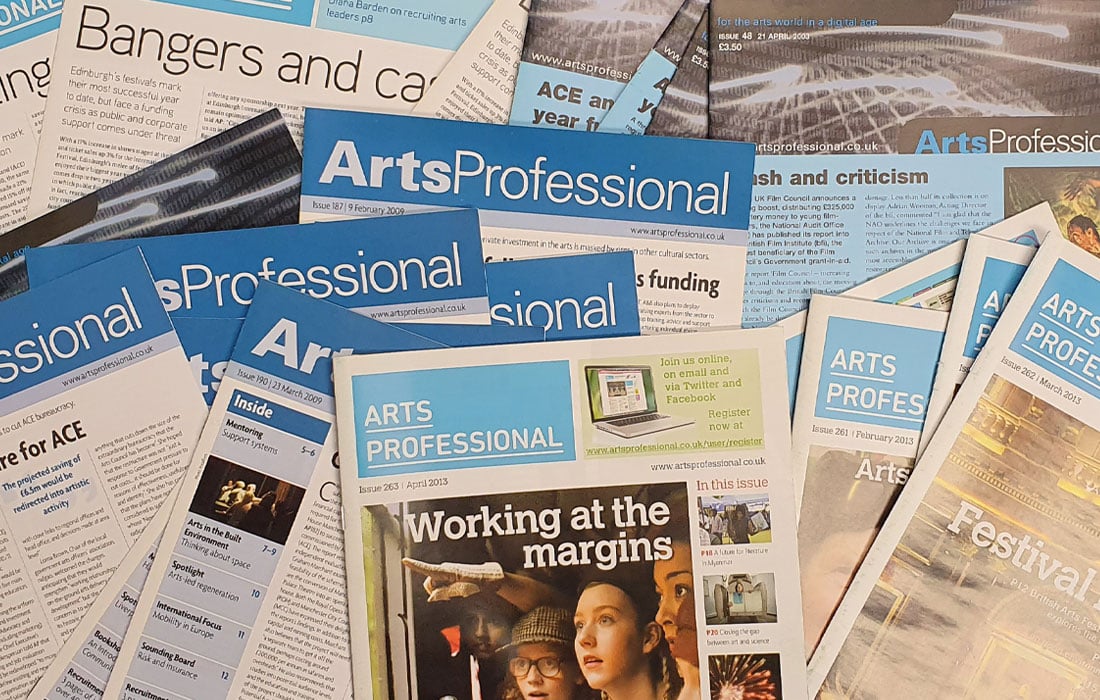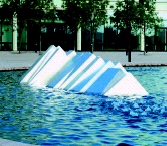
Corporate art collections: opportunities on a grand scale
Many artists have shied away from the corporate market in the past but for many it has represented an excellent opportunity to sell and develop their work. Peter Harris outlines some recent research findings on corporate art collections in the UK and urges artists to take advantage of the exciting opportunities on offer.
During the period 1985?95 International Art Consultants Ltd / Art For Offices carried out extensive international research on the practice of corporate art collecting. This research was aimed at determining current practice in key European countries, the US, Australia and Japan. The results showed different approaches from country to country depending on culture, tax regimes and the time at which collecting art had taken hold in the corporate sector. Companies in most countries shared a common belief that collecting art was motivated by image rather than investment, but few companies seemed to have developed well thought through programmes for realising the image they sought to create via their art collection.
In a follow-up study it was therefore decided to look at the subject of the benefits of corporate art collections in more depth. The new research covered over 150 companies known to collect art in the UK. In addition, selected companies in the US and Europe were questioned to assess whether the UK results were mirrored in other countries.
Key findings
The key findings were as follows:
- Most UK corporate collections are managed by an employee as part of their responsibilities rather than by a full-time curator. Most international collections have a full-time curator.
- 80% of collections had been started in the last 20 years.
- The size of collections varied widely from less than 50 works to up to 5,000 works with an equal distribution throughout the range.
- 80% of all works of art collected were post 1940, and 50% of the works collected were purchased post 1990.
- All collections contained oil paintings and most included watercolours too. 80% of collections included sculpture and 70% included mixed media, limited edition prints, wall hangings and photography. Less than 40% included graphics, crafts and memorabilia.
- 60% of collections were open to view by the public, usually by appointment.
- 75% of collections had a clear rationale but in less than 30% of cases was this related directly to the company's activities rather than to a general ethos or culture.
The financing for corporate collections came mainly (60%) from central funds such as PR, financial management, human resources and executive budgets. In only 30% of cases was it funded from a new building budget. In about 10% of cases the costs were apportioned to individual business units.
The practice of corporate collecting in the UK is comparatively new and, as witnessed in other countries, the benefits are seen in terms of image rather than investment value. Investment value is seen as a possible long-term bonus but the immediate returns are related to conveying a positive corporate image to staff, shareholders, visitors and the community at large as well as contributing to a motivating and stimulating working environment. The research indicates that attempts are being made in some cases to quantify the value of investment in corporate art collections but the development of the collection is often a function of a new building programme or acquisitions and mergers rather than regular annual budgeting.
In most cases the cost of establishing and developing art programmes is controlled by central departments such as human resources or corporate affairs rather than via new buildings budgets, although detailed control of the artworks is often delegated to facilities management departments. Most of the companies surveyed did not yet fully capitalise on their art collections in PR terms although they recognised the benefits of doing so. Many did not involve the staff on an ongoing basis although most were planning to do so more in the future. Where a full-time curator or art consultant is used, companies capitalise on the benefits of their collections more efficiently. Many companies recognise the need to further document their collections and to have a flexible computer-based recording system to allow them to keep pace with rapid changes.
From the limited input received from other countries it seems that these conclusions apply generally rather than just to the UK.
Opportunities for artists
There are some wonderful opportunities for artists to sell or rent their work to corporations. Although the security concerns of many companies mean the audience will be limited in size, work in a corporate collection gives an artist exposure to a good cross-section of society. This exposure and awareness may be enhanced where there are opportunities for artists to go in and talk about their work to staff, and may even result in more sales.
It does no harm to contact the corporate affairs and human resources departments of companies as well as the facilities managers. Architects and designers often influence the choice of art, and for many companies art consultants play a key role in the selection of art and development of an art programme.
Artists should therefore ensure that their work is represented in art consultants' visual information systems, as well as in the national Axis art register. Works should always be well photographed and made available in digital format too for email, CD and website usage, since more and more companies are using digital visual sources to make initial selections of works of art and artists to commission.
There is a strong move towards the integration of art into the design of new buildings, and this can often lead to opportunities for site-specific commissions, even if the company concerned is not going to build up a more extensive art collection.
On a grand scale
Some artists shy away from commissions feeling that their artistic integrity might be compromised by the needs of their clients. In my experience, however, if the selection of an artist for a commission recognises and takes into account the directions in which the artist is progressing, a corporate commission can present an excellent opportunity for the artist to develop his or her work on a dramatic scale.
As Allen Jones RA said of his recent commission for GlaxoSmithKline: "I see commissions as simply a possibility of doing something which is on a scale unthinkable in my studio and with my own budget."
A global art programme
GlaxoSmithKline, one of the world's largest companies, is about to open its new global headquarters in Brentford, London. It houses an outstanding collection of art which reflects 'A new vision', a general title encompassing a number of GlaxoSmithKline's key corporate values:
- Global – the collection includes works by artists from all over the world.
- Innovative – many of the works demonstrate either new ways of looking at the world and everyday events, or innovative techniques.
- Caring – the collection includes a major body of art by artists with disabilities from all over the world.
- Quality and integrity ' the artists' works represent contemporary art of the highest quality.
- People – the programme of art involves the staff with a gallery for changing exhibitions, talks by artists, and an intranet catalogue, and is a dynamic and continually changing process.
- Integration – the art programme will be linked to GSK's sponsorship activities. The collection is supported by an ongoing art programme, which has been implemented in three phases.

Phase I involved commissioning major works of art to interrelate directly with the architecture of the building and the building programme. This was possible because the art was planned at a very early stage in the overall building programme. When construction of the new headquarters started in 1999, over twenty leading contemporary artists were briefed on the philosophy of the company and the concepts behind the new building and asked to suggest ideas for what they would like to contribute in terms of site-specific art. This approach gave the artists the freedom to be far more creative than if they had to respond to a more restrictive pre-determined brief. From the proposals submitted the art committee selected a group of artists whose works became the foundation of the art programme. These included abstract and figurative sculpture by Allen Jones RA, Kevin Atherton, Serge Moro and Wendy Taylor; water features by David Jacobson and Marta Pan; aerial sculptures by Jan Blake and a suspended kinetic sculpture, which records time exact to its global location measurement from space, by Peter Logan.
Phase II involved the purchase and commissioning of art for key public and executive spaces selected from sketches and maquettes submitted by artists. It included kinetic work by Adam Craig, sculpture by Roland Piche and Maurice Blik, and paintings and paper works by Ian Humphries, Neil Canning, Lincoln Seligman and Helyne Jennings, wall hangings by Lara Carter and Nick Rodgers, and ceramics by Peter Hayes.
Phase III saw the installation of two contrasting groups of art in the general office areas: a collection of work by leading contemporary artists, and one of the largest collections of art by artists with disabilities from all over the world.
As part of the art programme, Louise Soloway (previously artist-in-residence for the British Council during the construction of Hong Kong?s new international airport) worked on site as artist-in-residence to record the construction of the buildings. The resulting bas-relief records the creative process of building GSK House, including the individual characters involved, from architects and accountants to construction workers.
The art programme will continue beyond the opening of the new building. The art gallery, a staff art club and a programme of events and activities involving or related to the art collection will ensure that the collection remains dynamic and relevant. Parts of the collection will be rotated among other GlaxoSmithKline sites and further works will be added to the collection from time to time.
Peter Harris is Chairman of International Art Consultants Ltd/Art For Offices Ltd. t: 020 7481 1337; e: [email protected]; w: http://www.afo.co.uk

Join the Discussion
You must be logged in to post a comment.